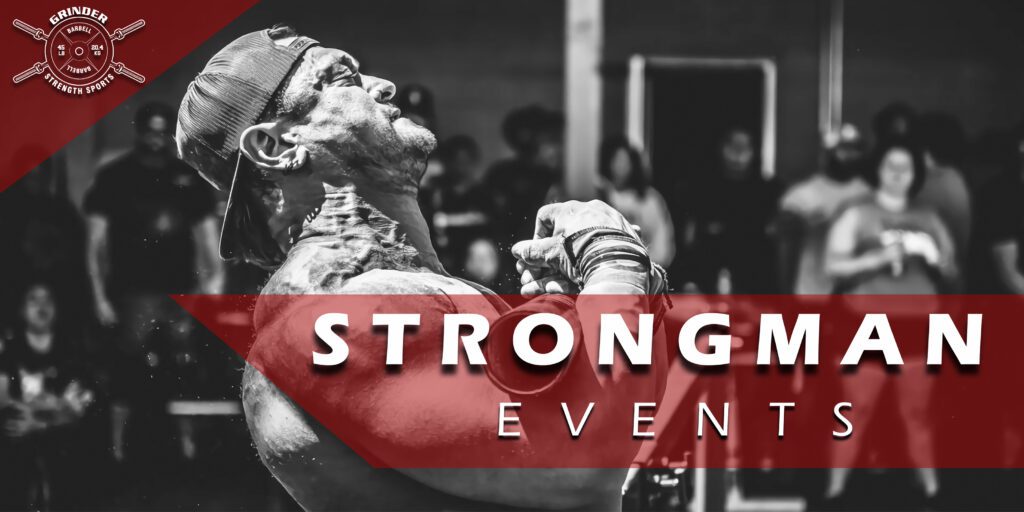The Train Pull is a monumental Strongman event that tests an athlete’s raw power, endurance, and mental toughness. Competitors harness themselves to a full-sized train and pull it along a track over a designated distance. The sheer weight and rolling resistance of the train make this event one of the most demanding and visually impressive challenges in Strongman competitions.
Event Description
The Train Pull involves towing a locomotive or railcar, often weighing tens of thousands of pounds, using a harness and, in some cases, a rope for additional leverage. Athletes must overcome the train’s initial inertia and maintain consistent effort to keep the vehicle moving. This event emphasizes total-body strength, cardiovascular fitness, and mental fortitude.
Equipment Specifications
Implements and Setup
- Train: The vehicle used can vary, ranging from a single railcar to a full locomotive, with weights typically exceeding 30,000 lbs.
- Harness: A padded harness is worn by the athlete to distribute the load across the upper body and shoulders.
- Rope: Some events include a long, thick rope for athletes to pull with their hands to provide additional leverage.
Additional Specifications
- Chalk is allowed to improve grip.
- Gloves, belts, knee sleeves, and elbow sleeves are typically permitted.
- Footwear with strong grip, such as cleats or specialized shoes, is often recommended.
Rules and Execution
Objective
Pull the train over a designated distance (e.g., 20–30 meters) as quickly as possible or within a set time limit.
Step-by-Step Execution
- Setup:
- Secure the harness tightly around your upper body and shoulders. Position yourself in front of the train with the rope (if used) within easy reach.
- Initial Pull:
- Begin with a powerful drive from your legs to overcome the train’s inertia. Lean forward into the harness to maximize force application.
- Maintain Momentum:
- Once the train starts moving, maintain consistent leg drive and use the rope (if allowed) for additional pulling power.
- Finish the Pull:
- Continue pulling until the train crosses the finish line. Time stops when the entire train clears the line or when the judge signals completion.
Good Pull Criteria
- The train must move the full designated distance.
- Athletes must maintain control and avoid losing balance during the pull.
- Completion is judged based on time or distance, depending on the competition format.
Prohibited Practices
- Letting the train roll backward during the pull.
- Using unauthorized equipment or grip aids.
- Violating competition-specific safety or performance rules.
Primary Muscles Worked
The Train Pull primarily targets:
- Legs (Quads, Hamstrings, Glutes): For generating the powerful strides needed to move the train.
- Back (Lats, Erector Spinae): For stabilizing and pulling during the rope phase.
- Core: For balance and efficient power transfer.
- Arms and Shoulders: For pulling the rope and maintaining tension.
Training Tips
- Develop Leg Drive: Incorporate sled pushes, heavy lunges, and squats to build lower body strength and explosiveness.
- Enhance Grip Strength: Use farmer’s carries and rope pulls to prepare for the hand-over-hand pulling phase.
- Improve Endurance: Add long sled drags or hill sprints to boost cardiovascular conditioning.
- Practice Body Positioning: Work on maintaining a low, forward-leaning stance to maximize pulling efficiency.
Common Mistakes to Avoid
- Inefficient Starting Pull: Failing to generate enough initial power can stall momentum.
- Poor Body Position: Standing too upright reduces force application and increases strain on the body.
- Uneven Stride: Irregular steps waste energy and decrease efficiency.
- Neglecting Grip: Overlooking grip training can make the rope phase unnecessarily difficult.
Variations and Alternatives
- Truck Pull: Practice with smaller vehicles like trucks or buses to build confidence and refine technique.
- Sled Drag: Use a weighted sled to simulate the pulling mechanics of a train pull.
- Hand-over-Hand Rope Pull: Focus on rope-pulling drills to enhance grip strength and upper body power.
Scoring and Formats
- Timed Event: Complete the designated distance in the shortest time possible.
- Distance Challenge: Pull the train as far as possible within a time limit.
- Weight Challenge: Compete to move the heaviest train over a short distance.
Historical Context and Modern Implementation
The Train Pull is inspired by feats of strength that demonstrate the human ability to overcome seemingly immovable objects. It has become a hallmark of Strongman competitions, with larger and heavier trains used over the years to push athletes to their limits. Its sheer spectacle and difficulty make it a standout event in modern Strongman contests.
Real-Life Applications
Training for the Train Pull develops unparalleled full-body strength, endurance, and mental toughness. These attributes translate to improved performance in other Strongman events and everyday tasks requiring heavy pulling or dragging motions.
Conclusion
The Train Pull is a legendary Strongman event that showcases brute strength, endurance, and grit. Its immense difficulty and dramatic presentation make it a key feature of any competition. Mastering the Train Pull builds raw power and resilience, solidifying its place as a cornerstone of Strongman training.



